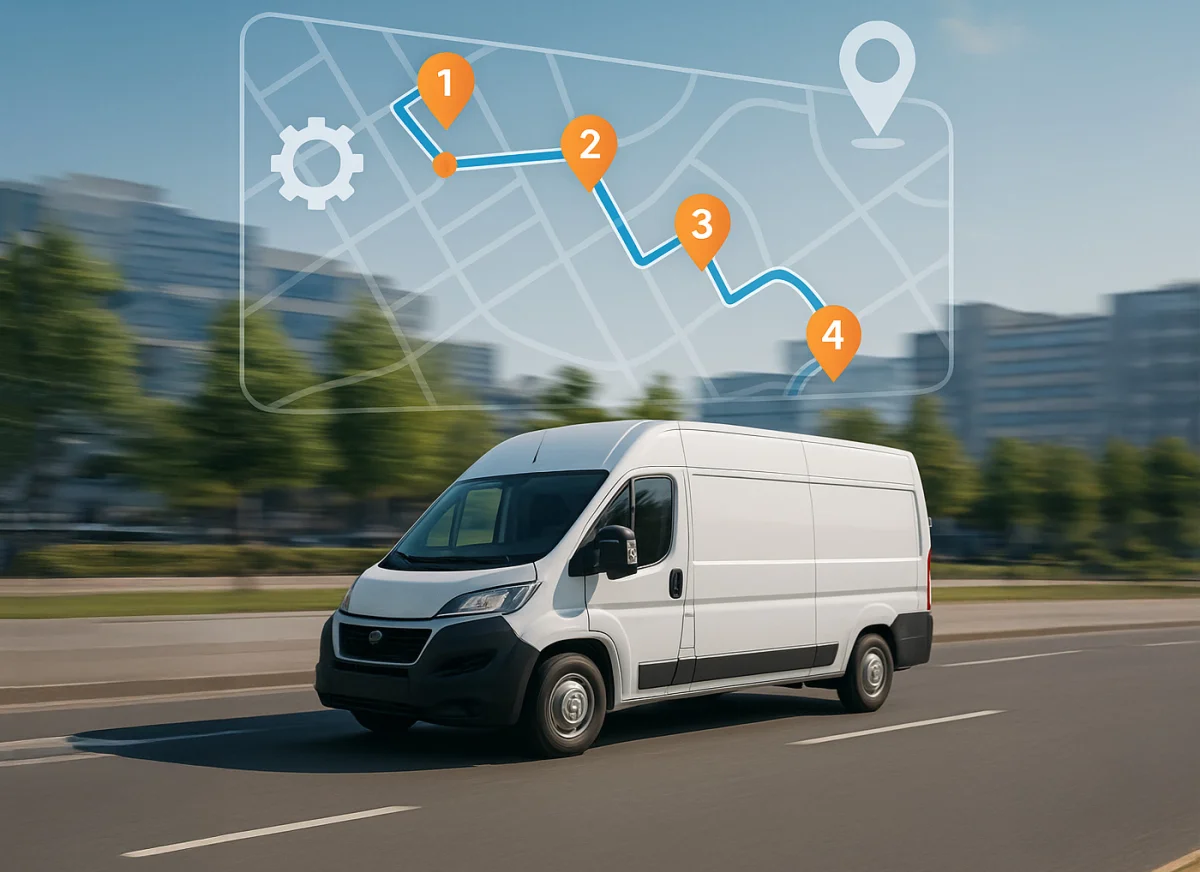Transport Optimisation Software: 8 Ways It Transforms Fleet Performance

Transport Optimisation Software:
For businesses running delivery fleets, especially those managing multi-drop routes, transport optimisation software is a necessity. Improving fleet efficiency will positively impact margins, customer satisfaction, and sustainability goals.
So what exactly does transport optimisation software do? And more importantly, how can it help your business? Below are eight powerful ways this technology can improve your fleet’s performance.
1. Dramatic Cost Savings from Smarter Planning

Fuel, labour, and vehicle wear-and-tear costs all add up very quickly. Transport optimisation software helps you plan routes that:
- Reduce miles driven
- Increase delivery density
- Require less time per delivery
- Make better use of available vehicles and drivers
- Adhere to promised time windows
This will reduce costs by cutting fuel spend, overtime, and maybe, even the fleet size needed.
Some strategic route planning systems even allow you to run "what-if" planning scenarios to explore how changing delivery time windows or fleet composition can impact costs, a valuable tool when you're under pressure to do more with less.
2. Real-Time Visibility: No More Guesswork

Last-mile delivery is the most expensive leg of the supply chain, so there’s no room for guesswork. Managers need to know whether routes are being executed in line with the optimised plan.
Modern optimisation platforms integrate with GPS and telematics solutions to offer real-time tracking and status updates. Your team knows where every vehicle is, what it’s carrying and whether it’s on schedule.
This empowers transport managers to respond to issues like delays or missed deliveries as they happen, not after the fact.
Real-time tracking can also enable automatic updates to customers, reducing "where is my order” (WISMO) phone calls.
3. Greener Routes, Lower Emissions

With increasing pressure to cut carbon emissions and meet Environmental, Social and Governance (ESG) targets, route optimisation is a critical sustainability tool. By reducing mileage, idling time, and failed first-time deliveries, fleet delivery software is helping to lower emissions without compromising on service levels.
Some solutions include carbon calculators and sustainability dashboards so you can track your environmental impact over time. You can even incentivise customers with lower-priced deliveries if they choose “green” delivery windows at checkout: Many customers look out for environmental delivery options, prioritising sustainability over speed. Read our 2025 Home Delivery Consumer Sentiment Study to find out more.
4. Smarter Decisions with AI and Predictive Analytics

The best route optimisation platforms now harness artificial intelligence (AI) and machine learning to go beyond just planning routes. They can learn from your operational data over time, such as how long a drop usually takes at a specific location, helping to produce more accurate plans in the future.
Predictive analytics also enables forecasting and exception handling. For example, if a certain area is prone to congestion on Friday afternoons, the system can proactively reroute or adjust schedules to avoid delays.
5. Intelligent Depot Selection for Better Efficiency

Not all software is created equal when it comes to planning flexibility. One often-overlooked advantage can be best depot selection. This is the ability to dynamically choose the most cost-effective depot to dispatch each delivery from.
Advanced systems (like those from Descartes) can factor in capacity, proximity, delivery commitments and cost to optimise not just the route, but where the journey starts, even factoring in customer returns and collections or second visits to different depots. This is particularly valuable for businesses operating regional hubs or facing tight service-level agreements (SLAs).
6. Seamless Integration with Your Existing Systems

A good transport optimisation tool doesn’t sit in isolation: It also must connect with your transport management system (TMS), enterprise resource planning (ERP) platform, warehouse management system (WMS), and/or driver mobile apps. This ensures smooth data flow, minimal rekeying, and an accurate view of your operations from planning to proof of delivery and even customer satisfaction surveys.
The more connected your tech stack, the easier it is to scale, automate, and adapt to evolving future needs.
7. Operational Resilience and Scenario Testing

Change is constant, whether it’s fluctuating demand, driver shortages, or road closures. Optimisation software allows you to stress-test your operation by simulating different conditions and seeing how your fleet performs.
This sort of resilience planning helps business change managers and operations leaders stay ahead of disruption, instead of having to react to it.
8. Happier Drivers and Customers

Better plans mean smoother days for drivers. Reduced stress, fewer failed deliveries, and more predictable shifts will improve driver satisfaction and retention.
At the same time, customers benefit from tighter delivery windows, better estimated time of arrival (ETA) accuracy, and more transparency. Read our blog on Alleviating Driver Stress.
Ready to Optimise Your Fleet?

At Descartes, we help businesses like yours unlock the full potential of their transport operations. Talk to us if you need to improve the efficiency of your fleet and deliveries.
Here’s what to expect from a free personalised consultation:
- Tailored Guidance: Our expert will take the time to understand the unique needs of your fleet or business.
- Problem-Solving Focus: Share any roadblocks or pain points you're facing, and we can offer actionable insights.
- Strategic Roadmap: We'll explore strategies and solutions with you that could enhance your efficiency and performance.
Contact us today to take the first step toward smarter, more sustainable transport.

